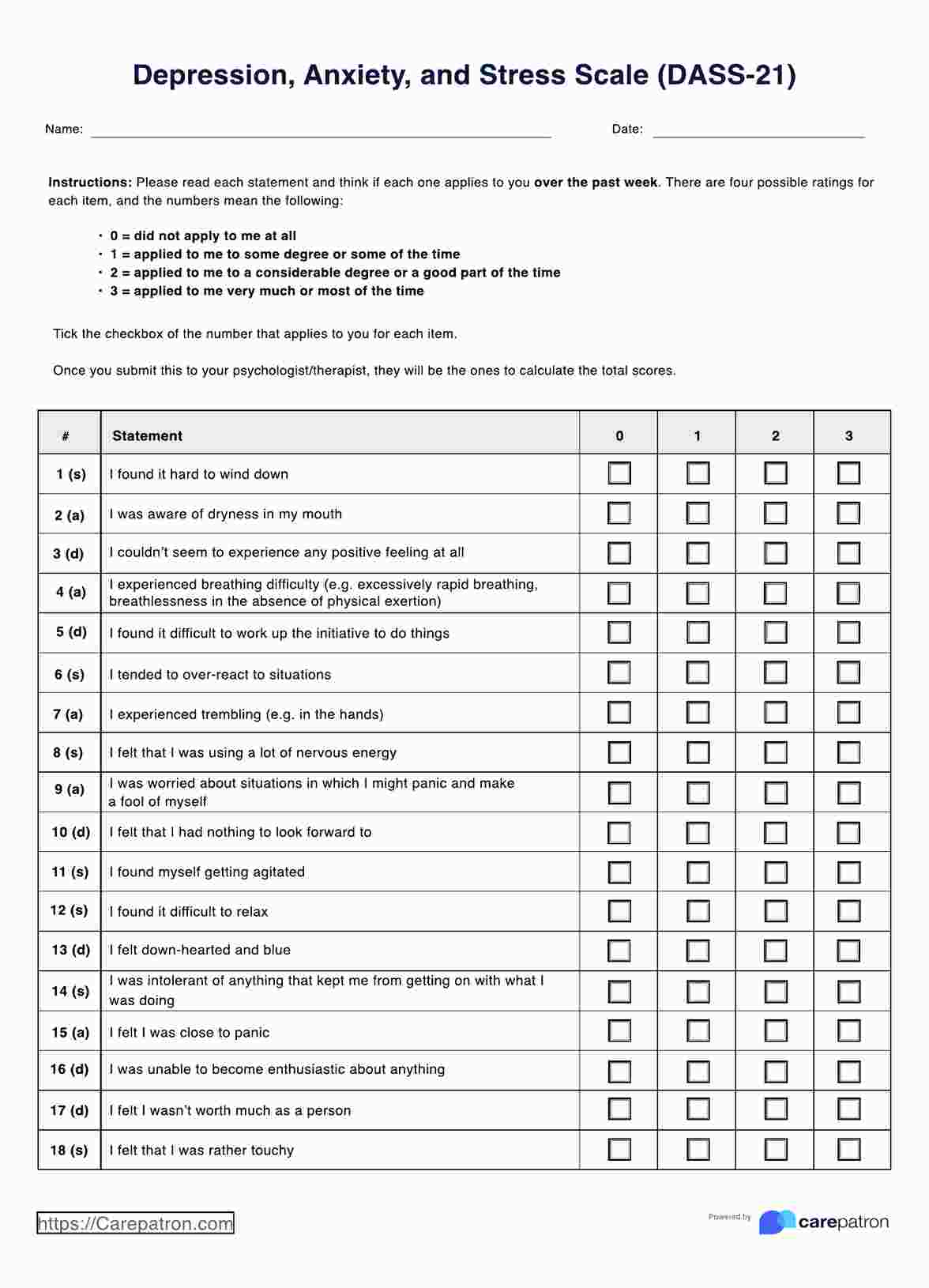What the scale does is that it gives you a semblance of objectivity through the score ranges and score designations. The score ranges and designations will give you something to work with when assessing your client’s depression, anxiety, and stress levels.

Depression Anxiety and Stress Scale (DASS-21)
Use the Depression, Anxiety, and Stress Scale (DASS-21) to measure the levels of your client’s depression, anxiety, and stress! It will help you create a plan to guide them toward their desired treatment outcomes.
Depression Anxiety and Stress Scale (DASS-21) Template
Commonly asked questions
As soon as possible is always good. Of course, that depends on the health practitioner, but if you’re at that point when you need to come up with a treatment plan for them, gauging the problem is something you’ll have to do first. In the case of this scale, you’re gauging their depression, anxiety, and stress levels.
It’s up to you if you want your client to answer this sheet on the spot. But always be mindful of your client and how they’re feeling. If you suddenly issue this, it might be abrupt for them and they might get flustered or uncomfortable. That might add unnecessary pressure on them and contribute to their stress or anxiety.
Best to be on the safe side. If you want, you can have them take it home and submit it during your next appointment. Time and space might make them think clearly about themselves. But do remind them that their answers should be based on if the statements apply to them over the past week.
EHR and practice management software
Get started for free
*No credit card required
Free
$0/usd
Unlimited clients
Telehealth
1GB of storage
Client portal text
Automated billing and online payments











